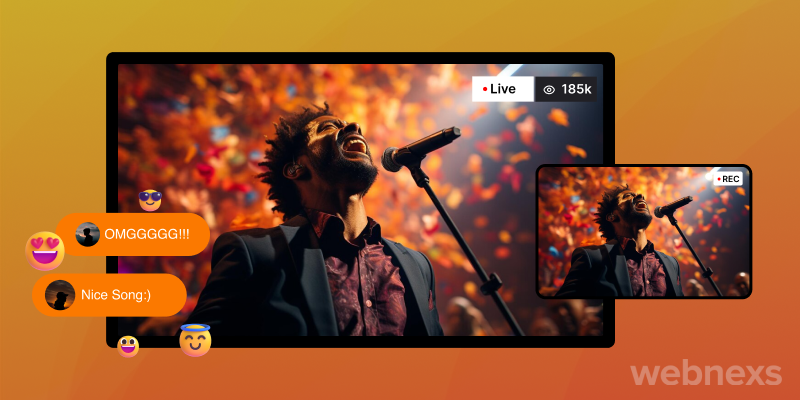In today’s fast-paced world, television consumption has evolved drastically. Gone are the days when viewers had to be at home at a specific time to catch their favorite shows. With the advent of digital technology and the internet, the way we watch TV has transformed significantly. One of the most significant advancements in this realm is Catch-Up TV. This comprehensive guide will delve into what Catch-Up TV is, how it works, its benefits, and its impact on the television industry.
What is Catch-Up TV?
Catch-Up TV is a service provided by broadcasters that allows viewers to watch television programs after they have been broadcasted live. This service usually offers a window of availability, typically ranging from a few days to a month, during which viewers can access the content they missed. Catch-Up TV can be accessed through various platforms, including broadcaster websites, dedicated apps and set-top boxes.
How Does Catch-Up TV Work?
Catch-Up TV relies on digital recording and streaming technologies. Here is the steps on how it works?
- Recording Live Broadcasts: Broadcasters record their live television programs and store these recordings on their servers.
- Making Content Available: Once a program has aired, it is made available on the broadcaster’s Catch-Up TV platform. This can be a website, an app, or a service provided through a set-top box.
- User Access: Viewers can access the Catch-Up TV service by logging into the platform. They can search for the programs they missed and stream them directly over the internet.
- Content Window: Programs are available for a limited period, after which they may be removed from the platform. This stage can change based on the broadcaster’s policies and agreements with content producers.
Platforms Offering Catch-Up TV
There are several platforms where viewers can access Catch-Up TV services:
- Broadcaster Websites: Most major broadcasters have dedicated sections on their websites where viewers can watch recently aired programs.
- Dedicated Apps: Broadcasters often have apps for smartphones, tablets, and smart TVs that offer Catch-Up TV services.
- Set-Top Boxes: Many cable and satellite TV providers include Catch-Up TV services in their set-top boxes, allowing viewers to watch missed programs directly on their television sets.
- Streaming Services: Some streaming services aggregate content from various broadcasters, offering a centralized platform for Catch-Up TV.
Benefits of Catch-Up TV
Catch-Up TV offers numerous benefits to both viewers and broadcasters:
- Convenience: Viewers can watch their favorite programs whenever they like, without having to stay to a TV schedule.
- Flexibility: Catch-Up TV provides the flexibility to watch content on various devices, including smartphones, tablets, computers, and smart TVs.
- Increased Engagement: By making content available after the initial broadcast, broadcasters can increase viewer engagement and reach a wider audience.
- Extended Reach: Catch-Up TV allows broadcasters to reach viewers who may not have access to live broadcasts due to time zone differences or other constraints.
- Monetization Opportunities: Broadcasters can monetize Catch-Up TV through advertising, subscription models, or pay-per-view options.
How to Access Catch-Up TV
Accessing Catch-Up TV is straightforward. Here are the steps typically involved:
- Choose a Platform: Decide whether you want to use a broadcaster’s website, a dedicated app, a set-top box, or a streaming service.
- Create an Account: Many platforms require you to create an account. This might involve providing some basic information and setting up a username and password.
- Browse or Search: Once logged in, you can browse through the available content or use the search function to find specific programs.
- Select and Watch: Click on the program you want to watch. The platform will stream the content to your device.
- Manage Preferences: Some platforms allow you to create watchlists, set reminders, or download content for offline viewing.
Popular Catch-Up TV Services
Several broadcasters and services are known for their excellent Catch-Up TV offerings. Here are a few examples:
- BBC iPlayer: The BBC’s Catch-Up TV service offers a wide range of content, including TV shows, movies, and exclusive online content.
- ITV Hub: ITV’s service allows viewers to catch up on popular shows and even stream live TV.
- Hulu: While primarily a subscription-based service, Hulu offers a range of Catch-Up TV options for recently aired shows.
- Sky Go: Sky’s service includes live TV, on-demand content, and Catch-Up TV, providing a comprehensive viewing experience.
- Channel 4’s All 4: Channel 4’s Catch-Up TV service includes a vast library of shows, including exclusive content and box sets.
The Future of Catch-Up TV
The landscape of television consumption continues to evolve, and Catch-Up TV is poised to play a significant role in this evolution. Here are some trends which help us for future developments
- Integration with Streaming Services: As streaming services become more popular, Catch-Up TV may be increasingly integrated with these platforms, offering a seamless viewing experience.
- Enhanced User Experience: Advances in technology, such as artificial intelligence and machine learning, could lead to more personalized recommendations and improved user interfaces.
- Expanded Content Libraries: Broadcasters may expand their Catch-Up TV offerings to include older content and exclusive online programming.
- Increased Monetization: New monetization strategies, such as targeted advertising and premium subscription tiers, could emerge.
- Global Accessibility: As internet connectivity improves worldwide, Catch-Up TV services may become more accessible to global audiences.
Challenges and Considerations
While Catch-Up TV offers numerous benefits, there are also challenges and considerations to keep in mind:
- Licensing and Rights: Broadcasters need to navigate complex licensing agreements and content rights to offer Catch-Up TV services.
- Bandwidth and Quality: Streaming high-quality video requires significant bandwidth, which can be a limitation for some viewers.
- Piracy Concerns: Making content available online increases the risk of piracy, which can impact revenue and content integrity.
- Content Overload: With the vast amount of content available, viewers may experience content overload, making it difficult to decide what to watch.
- User Privacy: Collecting user data to provide personalized recommendations raises privacy concerns that need to be addressed.
Conclusion
Catch-Up TV has transformed the way we consume television, offering unique convenience and flexibility. By understanding how it works, the benefits it offers, and the platforms that provide it, viewers can make the most of this innovative service. As technology continues to evolve, Catch-Up TV is likely to become even more integrated into our viewing habits, offering new opportunities and challenges for both viewers and broadcasters. Whether you’re catching up on your favorite show or discovering new content, Catch-Up TV is a testament to the ever-changing landscape of television consumption.


